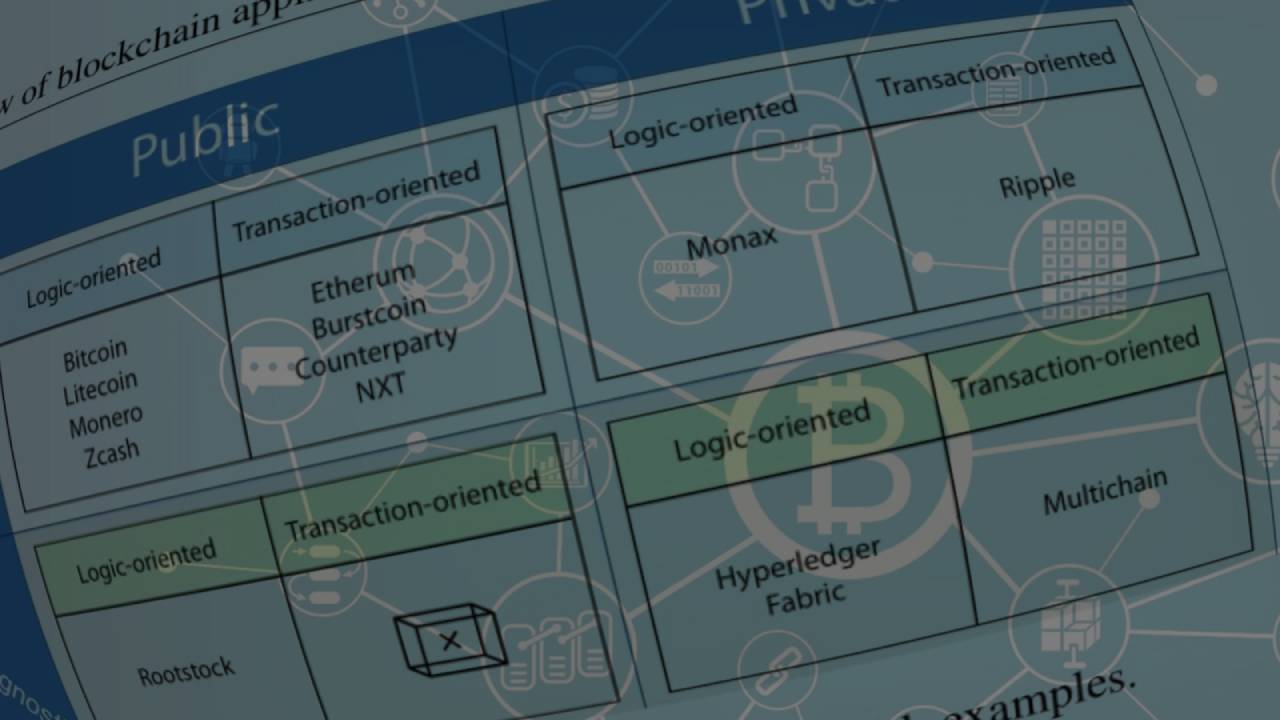Blockchain overview
Blockchain is a distributed append-only data structure that enables the verifiability and traceability of transactions. Transactions are performed
by adding blocks of data thanks to a peer-to-peer network, constituted by different entities called nodes (users). Trusted and non-trusted nodes can
interact with each other and be verified without the intervention of an external trusted authority. The nodes responsible for the full blockchain
verification are identified as full nodes.
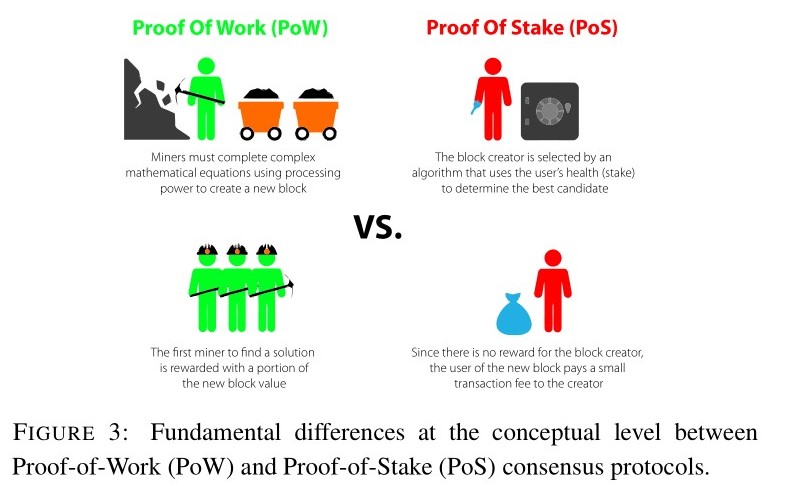
Social applications
Application interface for project volunteers (Bai and Synnes, 2017)
Bai and Synnes (2017) implemented a system to facilitate taking care of the elderly through a collaborative approach. The authors chose a Burrow
blockchain because of the smart contract and permission layer features, which enabled control over the access to mine and create contracts on the
chain. The implementation uses Proof-of-Stake protocols, relying on trustworthy nodes. The goal of this work was to reduce the workload of healthcare professionals by externalizing non-specialized tasks. To motivate volunteers, tasks were compensated through a token-based reward system depending on the time and resources spent. These tokens could be used to acquire coupons or discounts on local shops. Special users (elderly users) established the task missions, duration, resources needed, etc., and the reward was computed based on this information. The authors used the framework proposed by Juho and Veikko (2011) as a guide to set the number of tokens earned by completing the different tasks. For instance, a volunteer who performed tasks in the category of “volunteer at shopping” could win the badge “shopping addict” after completing a certain number of tasks within this category. Badges
included a level indicator to identify the current user level, or how good they were at this type of tasks. Some of the gamification elements applied
can be seen in the app screenshot in Figure 5. There is a blockchain implementation for each of the smart contracts to manage tokens and badges. These contracts take the conditions related to each achievement and the current player information to automatically assign badges or tokens after tasks are completed.
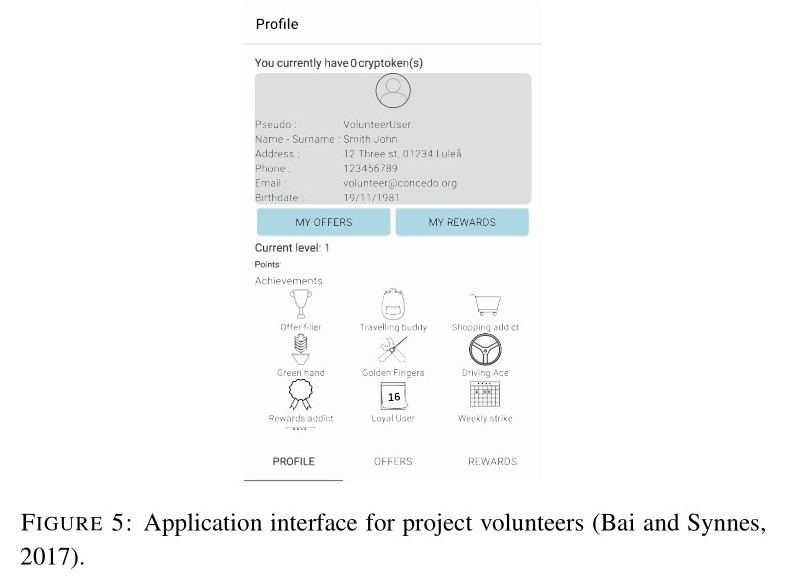
Pro-Bono user interface (Atterlönn, 2018)
Atterlönn (2018) describes in his thesis another welfare-related application through a platform to engage volunteers of non-profit organizations like sports clubs. This web and Android application transforms the number of hours of work into points and badges. After investigating different available blockchain systems, the author selected the Burrow blockchain network because of the possibility to include smart contracts. One of these smart contracts is employed to evaluate the hours of work and other metrics in relation to the gamification elements. The blockchain network is configured to Proof-of-Stake, preferred protocols for private networks. The author chose the MDA framework as a guide to introduce the gamification elements, which basically includes points, badges, and a leaderboard. Points are converted automatically into badges but are also used to compute to the general leaderboard, where the contribution of all the users is displayed, as depicted in Figure 6. This factor increases the competition among users. The number of points assigned to each task is proportional to an arbitrary value assigned by the organization.
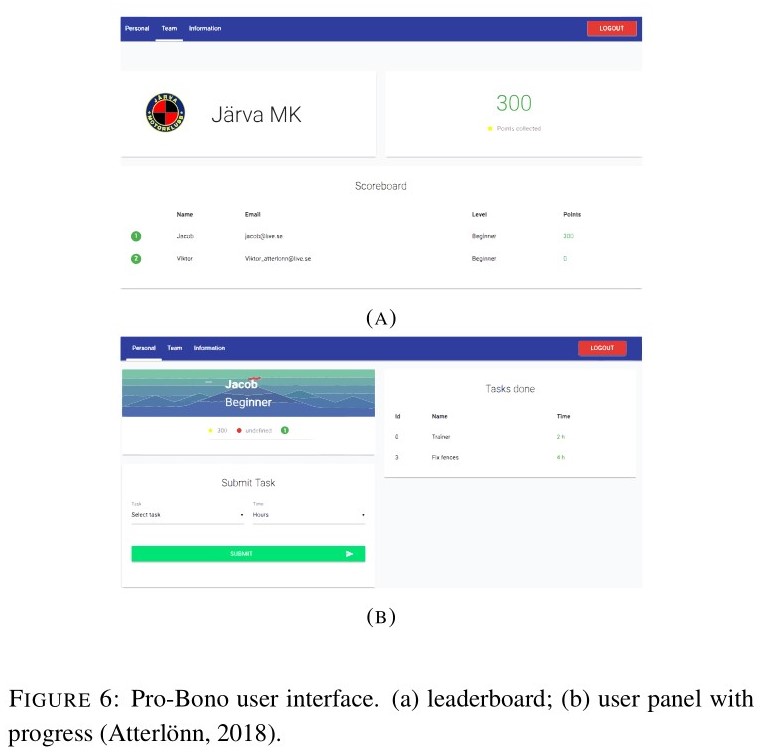
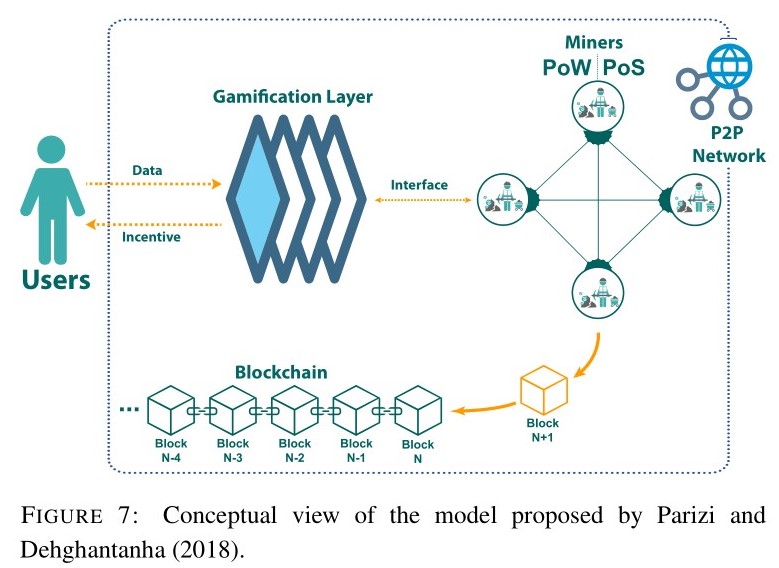
Lastly, a study conducted by Parizi and Dehghantanha (2018), analyzed which human factors limit the applicability of blockchain technology in general. The authors identified two major human-related problems in blockchain applications and proposed a preliminary implementation of gamification elements based on the mechanics dimension of the MDA framework. This article also includes a brief literature review about commercial platforms that integrate gamification elements for loyalty programs using different blockchain networks to measure and reward the users, such as HoToKeN, Sandblock, or POINT Token. The authors indicate that the problem with these platforms is the highly vendor-centered design, not attracting as many users to the network because they find that the rewards are small, and they do not compensate the effort invested. They suggest hiding the classical mining process (PoS or PoW) with a gamification layer encapsulating the technical details in relation to the protocols. This layer translates each completed block into awards or points, introducing the element of fun for block completion. This can be done with smart contracts declared through Solidity. Figure 7 shows how classic blockchain mining is encapsulated.
Industrial applications
Smart ECO Parking
The work conducted by Ferreira et al. (2019) proposes a gamified collaborative blockchain solution to improve finding parking spots; a general overview of the application (ECO PARKING) is shown in Figure 8. Users collaborate by indicating the location of free parking spaces and are rewarded with free parking minutes. The system estimates where there are free spaces close to the users based on the data history and the user information collected through their phone GPS working as a beacon, or thanks to the BLE beacon inside the vehicle. This application includes an artificial intelligence algorithm that considers the actual position of those trying to park and the available free spaces and then calculates the best route to the closest free spot, saving fuel and thus reducing the emissions. To control reward tokens and free spot information, the author implemented a test environment over Steemit, being able to assign points (free parking minutes) at a fixed rate, for instance, 5 min for each reported available parking spot.
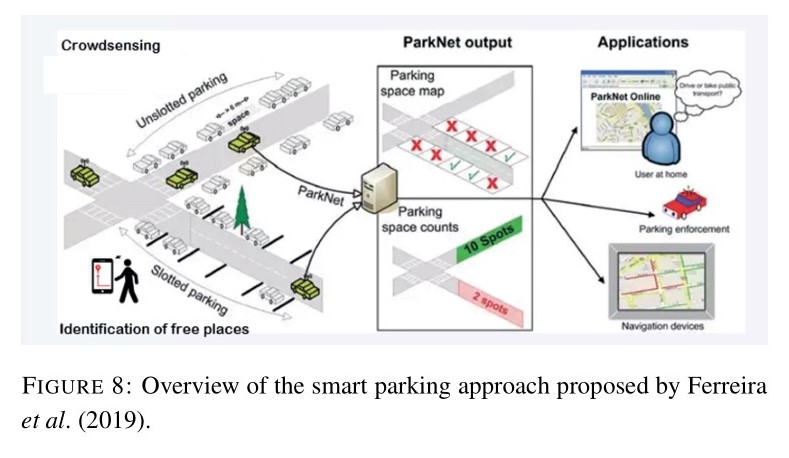
The client places in the application the data related to the package, as well as the possible time window for collection and delivery, and then several carriers place their offer in real time depending on the load and the location. An intelligent management system (SIAD) provides the best combination for transport in terms of price and time window. If both the carrier and the customer agree to change the route or time window to the one proposed by the gamified system (BID), they are rewarded with points that can be exchanged for discounts and lower prices on transport fees. Point transactions are supported on the blockchain-based platform Steemit. The authors used their own gamification design for this implementation. A general overview of the system is displayed in Figure 9. They conclude that the system can be also applied to smaller commercial companies, as this pilot was implemented in an ICT environment.
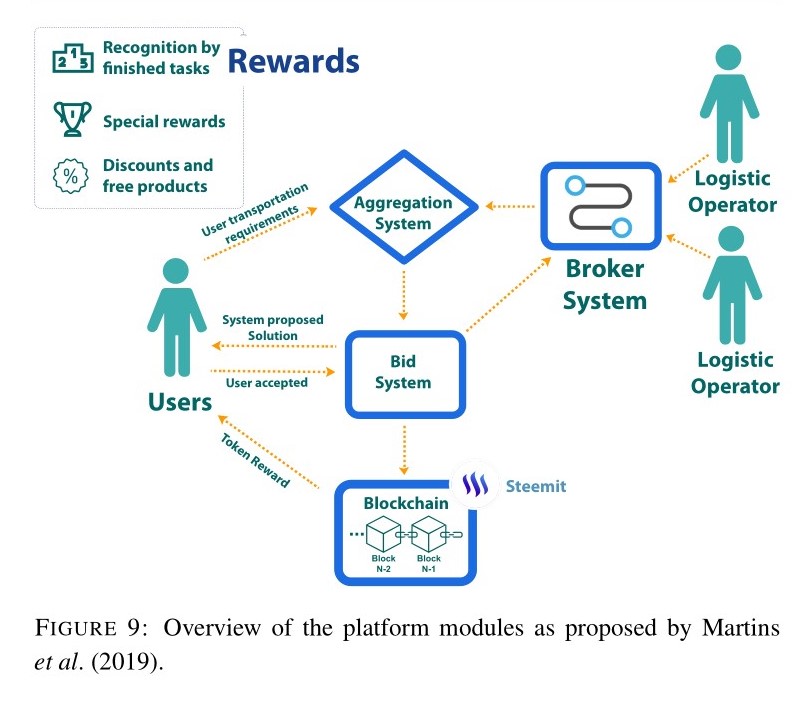
Brooklyn Microgrid (BMG)
Another energy-related application is the case of the Brooklyn Microgrid (BMG), which aims to promote the local distribution of green energy. Commonly, when customers pay a green tariff, they are somehow forcing the company to buy this energy amount from renewable sources. The BMG employs blockchain to enable peer-to-peer transactions and generate trust, since it provides an easy-to-use interface where the users can see the power consumption and generation of other network nodes while maintaining their privacy. This enables the developers to introduce gamification techniques such as leaderboards, which encourage energy saving and generation.
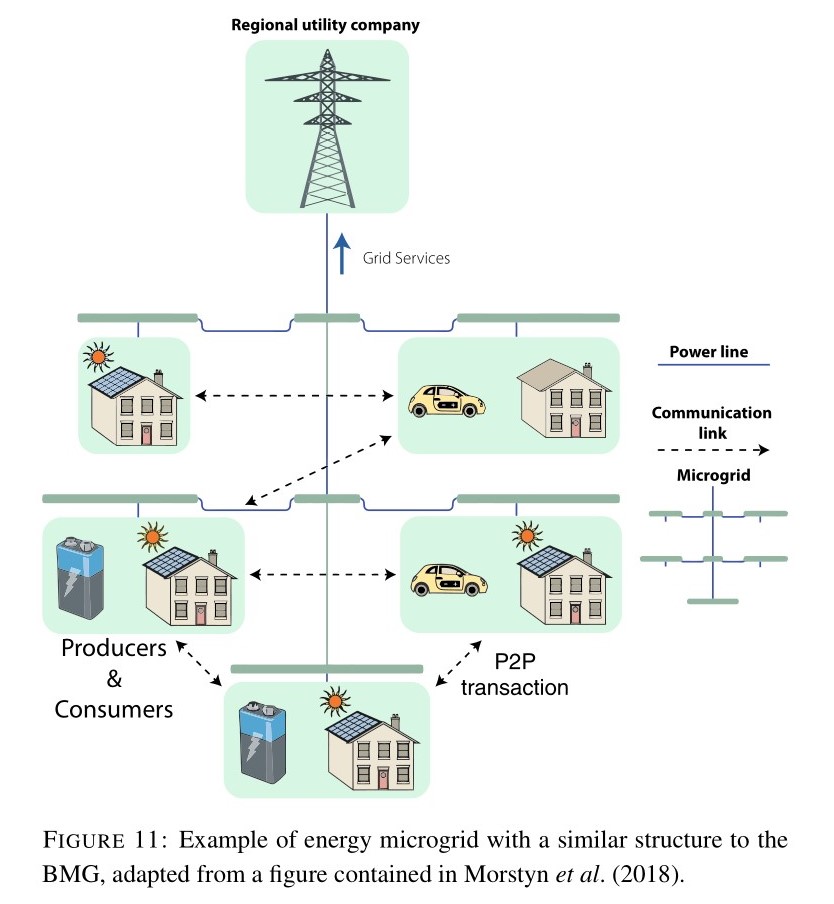
How to implement blockchain technology and gamification. Conclusions.
Taking this into consideration, we suggest that including smart contracts when awarding gamification prizes is an effective way of preventing network abuse, as long as an entity or group of persons external to the network controls their definition. Using smart contracts defined by trusted authorities, while protecting the code, enables
mitigating monopolizing and fraudulent behaviors, as the final validation of the actions required for token release is not performed by the network
users themselves.

